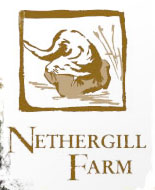 There's still some snow on the ground, but the weather has been a little warmer (well, at least not sub-zero) and it does feel better without those strong arctic winds.
There's still some snow on the ground, but the weather has been a little warmer (well, at least not sub-zero) and it does feel better without those strong arctic winds.This week I've checked out ponds on two sites for surveying later in the year, and possible inclusion in my project.
 On Wednesday I had a tour round my local nature reserve, and the wildlife trust is more than happy to let me loose as they will also benefit from the data. We visited 12 ponds at Rothwell Country Park, plus there was one we couldn't find, and one that I think was a mapping error. The ponds are relatively new so it will be interesting to find out what wildlife is becoming established there. We deployed the newt egg strips in a couple of the ponds, though most of them had sufficient vegetation anyway. On the way back we discovered what we thought was frog spawn in the stream along the track, but after a bit of prodding our excitement waned - it was just air bubbles mascarading as frog spawn.
On Wednesday I had a tour round my local nature reserve, and the wildlife trust is more than happy to let me loose as they will also benefit from the data. We visited 12 ponds at Rothwell Country Park, plus there was one we couldn't find, and one that I think was a mapping error. The ponds are relatively new so it will be interesting to find out what wildlife is becoming established there. We deployed the newt egg strips in a couple of the ponds, though most of them had sufficient vegetation anyway. On the way back we discovered what we thought was frog spawn in the stream along the track, but after a bit of prodding our excitement waned - it was just air bubbles mascarading as frog spawn. Yesterday I had a walk around what I think will be my 'official' pond surveying location, Letchmire Pastures. This is another relatively new site, reclaimed from an old coal mining area. Although it is a small site, some of the ponds are much larger, and in high water all join up to form what I would consider a lake rather than a pond - with fish and ducks, I'm not sure what I will find. However there are some smaller ponds with a range of reeds and overhanging vegetation. It's allegedly a good site for newts and toads, but I think it was too cold when I was there.
Yesterday I had a walk around what I think will be my 'official' pond surveying location, Letchmire Pastures. This is another relatively new site, reclaimed from an old coal mining area. Although it is a small site, some of the ponds are much larger, and in high water all join up to form what I would consider a lake rather than a pond - with fish and ducks, I'm not sure what I will find. However there are some smaller ponds with a range of reeds and overhanging vegetation. It's allegedly a good site for newts and toads, but I think it was too cold when I was there.With another half a dozen potential ponds close to home, I will have more than twenty five altogether, which I think is enough to carry out a scientific study. I just need to think of a hypothesis now!







